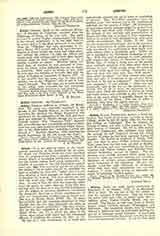

Ashby, GEORGE, monk of the Cistercian Monastery of Jervaulx in Yorkshire, executed after the Pilgrimage of Grace, in the year 1537. His name is found in several English martyrologies, but there is the utmost uncertainty as to the right form of his name, and as to the place and mode of his death. After the “Pilgrims” had been persuaded to disperse, Henry VIII turned with fury upon the monasteries in whose favor the rising had taken place, and ordered his soldiers “to take the abbots and monks forth with violence and to have them hanged without delay in their monks apparel for a terrible example to others.” Whether Ashby suffered then, or whether he was executed in June, when his abbot, Adam Sedbergh, was put to death, is uncertain. Stow seems to allude to him when he says that one Astbebe of Jervaulx died with the Abbot of Sawley, at Lancaster, March 10, 1537. It is also possible that the name may be taken from Astleby, one of the “Pilgrims” who is said to have visited Jervaulx. The fact that one or more monks of the abbey were executed for not embracing Henry’s schismatical measures is not disputed.
J. H. POLLEN

